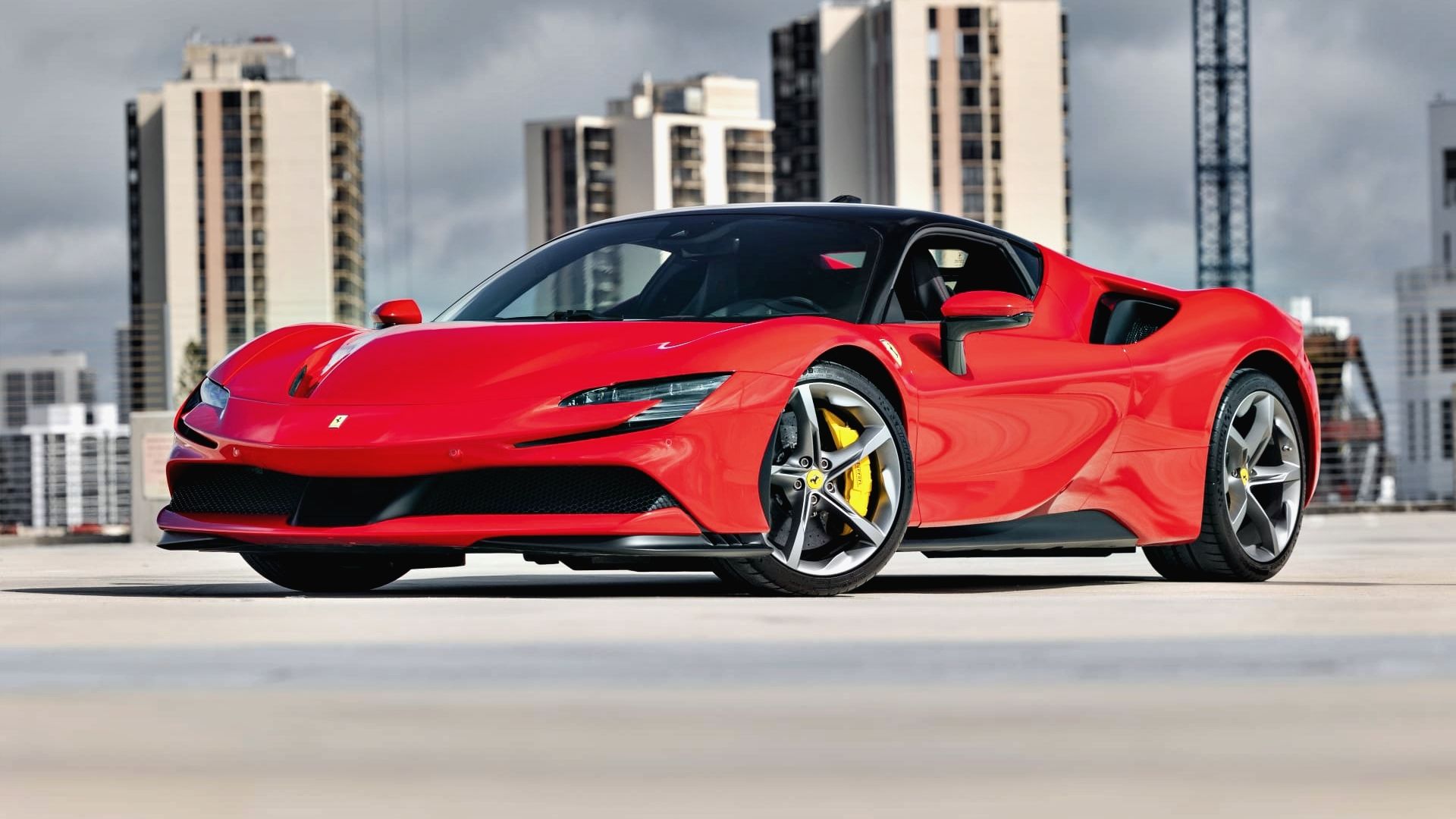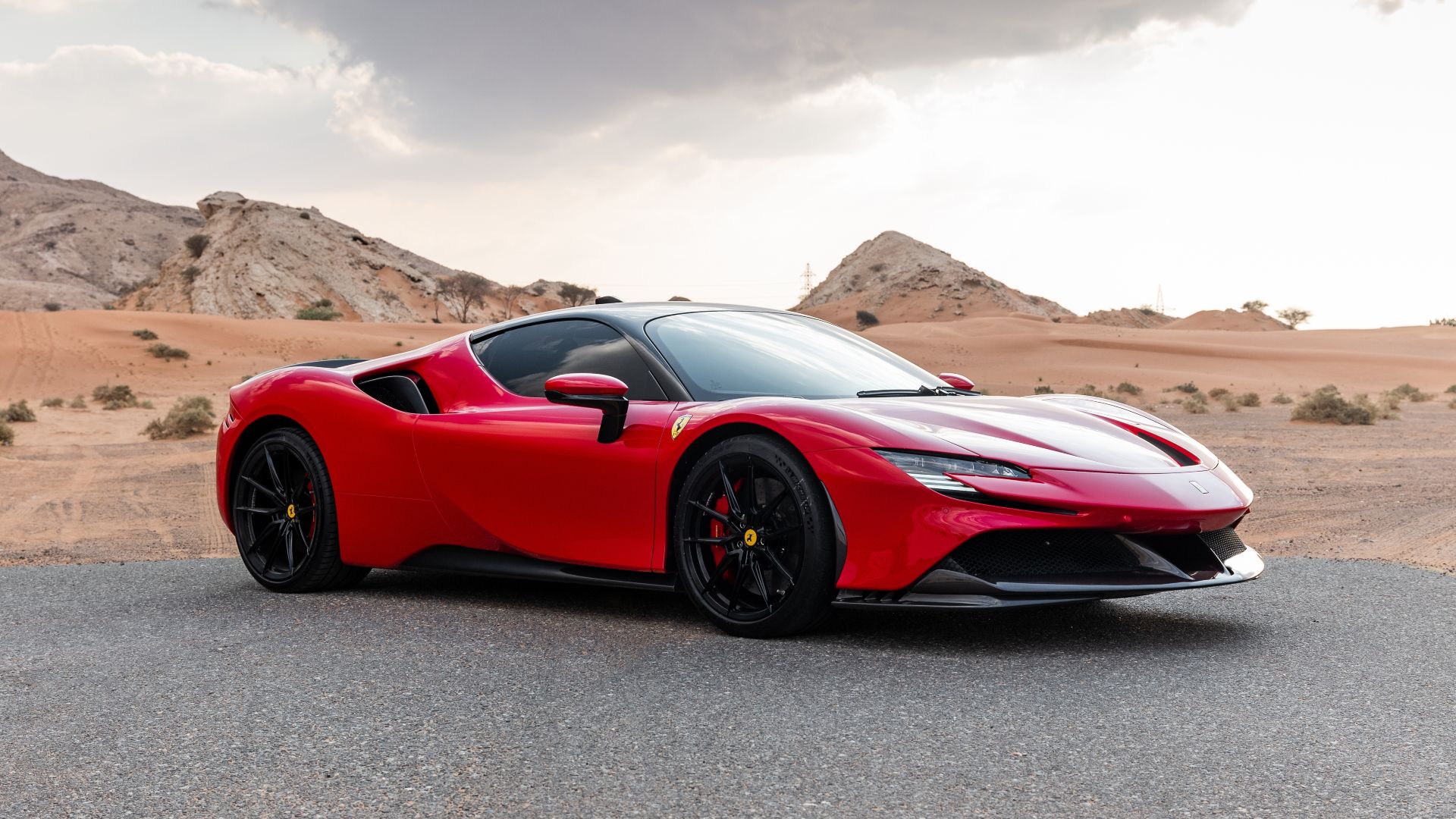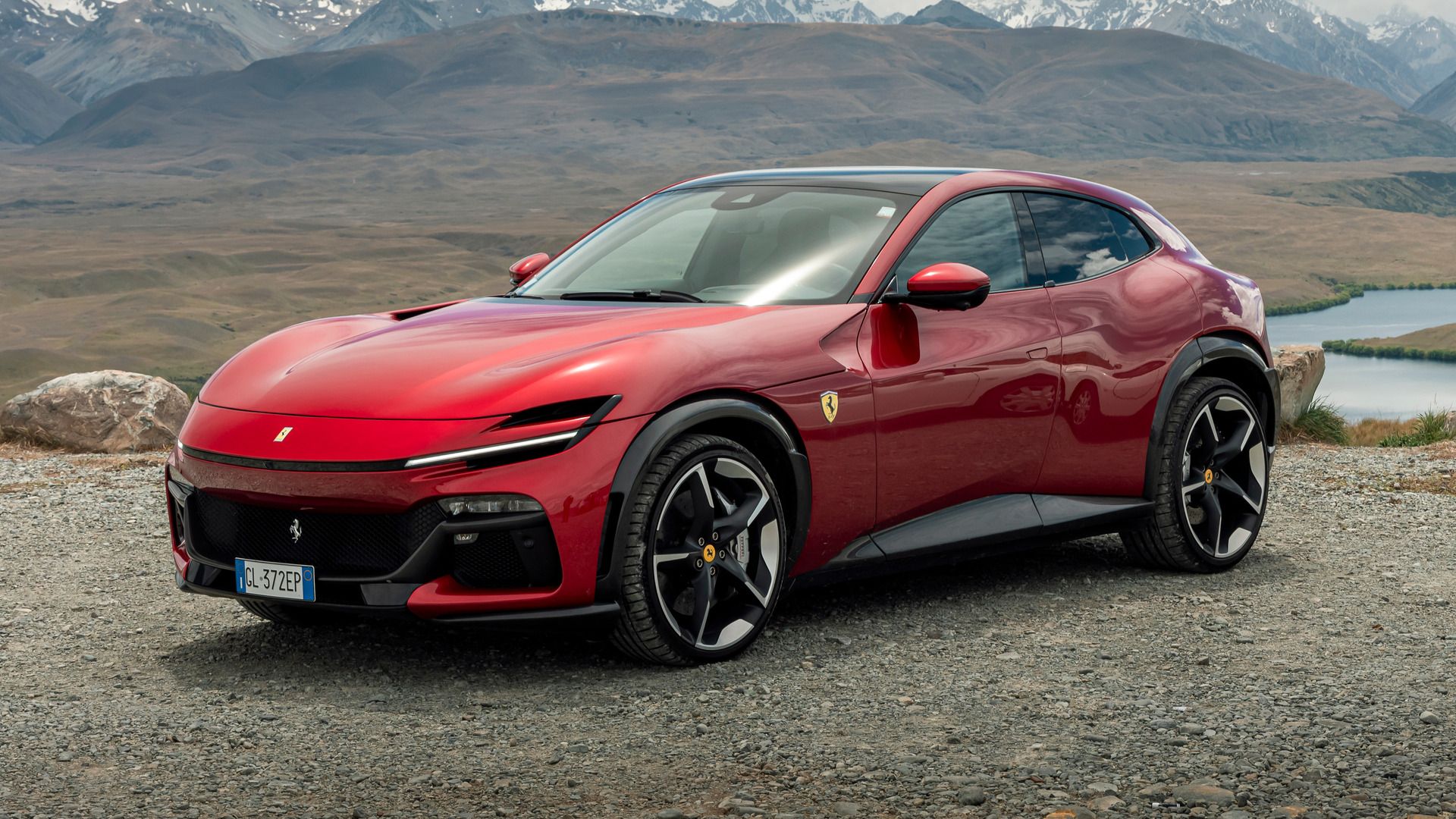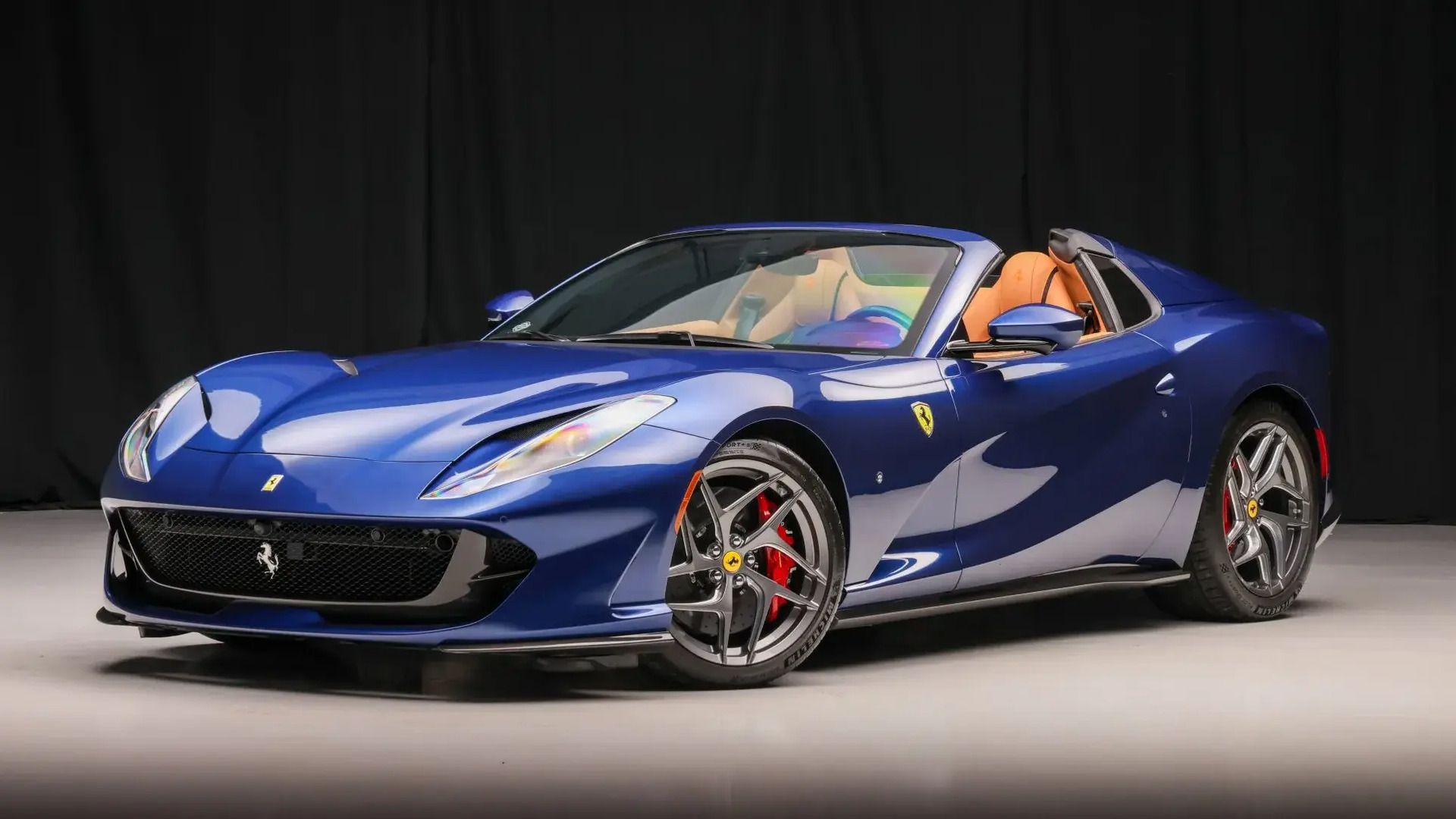[ad_1]
Summary
- Ferrari’s recently published patent application reveals their novel approach to electric propulsion with in-wheel hub motors, showcasing their dedication to innovation.
- The integration of in-wheel motors into future Ferraris offers potential advantages such as enhanced performance, increased efficiency, superior handling, and compact design, aligning with the brand’s core values.
- While challenges remain in terms of cost, complexity, and limited current application of in-wheel motors, Ferrari’s commitment to engineering excellence positions them at the forefront of the future of electric vehicles.
The iconic prancing horse of Ferrari is revving up for a new era – an electric one. While the roar of its V-12s and V-8s resonates through history, the future holds the charge of high-performance electric motors buzzing within its wheels. This shift, outlined in Ferrari’s ambitious 2022-2026 plan, marks a significant departure but retains the spirit of innovation and performance that defines the brand.
Imagine a Ferrari where the rush of acceleration isn’t solely fueled by gasoline, but by the instantaneous torque of in-wheel motors embedded directly in the hubs. This patent-pending technology, revealed in a recent USPTO filing, promises to redefine driving dynamics, offering unparalleled efficiency, responsiveness, and agility.
However, the path to electrification isn’t without its challenges. Integrating motors into the wheels increases complexity and raises the question of unsprung weight – a crucial factor in ride and handling. But Ferrari, a pioneer in pushing boundaries, is already grappling with these hurdles, seeking solutions through innovative suspension systems and bespoke EV architectures.

Here’s How Ferrari EVs Will Carry On Seven Decades Of Heritage
The idea of a Ferrari EV is preposterous, but the Italian marque is doing its best to soften the blow for us; at least aurally
In order to give you the most up-to-date and accurate information possible, the data used to compile this article was sourced from the United States Patent and Trademark Office (USPTO), Ferrari, and other reliable sources.
Ferrari Revs Up For Electric Future
Ferrari’s recently published patent application sheds light on a potential shift in its electric vehicle (EV) design strategy. The document, filed in April 2023 and published in November, details a novel approach to electric propulsion: in-wheel hub motors. This marks a departure from their previous patent for an axle-mounted motor layout, similar to the hybrid SF90 Stradale.
Key Features Of Ferrari’s In-Wheel Motor Design:
- Simplified design: While acknowledging the existence of in-wheel motors, Ferrari claims their design offers a more streamlined approach.
- Integration of components: To address the potential increase in complexity associated with in-wheel motors, Ferrari proposes merging motor and wheel components as much as possible.
- Brushless permanent magnet synchronous AC motor: This type of motor is chosen for its efficiency and compact size. The stator would be embedded in the wheel hub, while the rotor would be attached to the rim and rotate together.
- Addressing unsprung weight: The patent acknowledges the challenge of unsprung weight with in-wheel motors, which can affect handling and ride quality. Ferrari proposes an “appropriate suspension scheme” to mitigate this issue.
In addition to the in-wheel motor design, Ferrari has filed for protection of an innovative new tactile feedback system for EVs. This system aims to enhance communication between drivers and their vehicles, as electric cars typically produce less noise and vibration. Furthermore, the company plans to integrate a built-in coaching system to help drivers of future supercars become familiar with their vehicles without the need for an on-track instructor.

The Cost Of Every Ferrari On Sale Today
From the new Purosangue SUV to the plug-in hybrid SF90 Stradale, here is every new model from the Maranello stable to wear the prancing horse badge
In-Wheel Motors Can Redefine The Future
In-wheel motors are a revolutionary technology that could redefine the future of electric vehicles, and Ferrari is taking a keen interest. These innovative motors are embedded directly within the wheel hub, eliminating the need for traditional drivetrains with transmissions and differentials. This opens up a world of possibilities for enhanced performance, efficiency, and driving dynamics, making them particularly intriguing for a brand synonymous with exhilarating experiences like Ferrari.
Current Applications Of In-wheel Motors
While still in their early stages of widespread adoption, in-wheel motors are finding their footing in various automotive applications. They are currently used in:
Formula E Race Cars: In this all-electric racing series, each car boasts four independent in-wheel motors, offering exceptional acceleration, torque, and regenerative braking capabilities.
Electric Buses and Trucks: Several manufacturers such as Lordstown Motors have implemented in-wheel motors in these larger vehicles, leveraging their compact size and high efficiency for increased passenger capacity and payload.
Luxury Electric Hypercars: A few pioneering brands, like Rimac and Koenigsegg, have already incorporated in-wheel motors into their high-performance EVs, achieving unparalleled responsiveness and handling.
Potential Benefits:
The integration of in-wheel motors into future Ferraris could unlock a range of potential advantages.
- Enhanced Performance: In-wheel motors offer neal torque delivery, leading to faster acceleration and improved responsiveness. This could significantly enhance the exhilarating driving experience that defines the Ferrari brand.
- Increased Efficiency: By eliminating the need for a complex drivetrain with numerous components like transmissions and differentials, in-wheel motors offer improved energy efficiency, potentially extending the range of Ferrari’s EVs.
- Superior Handling: Individual control over each wheel’s motor allows for precise torque vectoring, enabling tighter cornering and improved traction for a more agile and dynamic driving experience.
- Regenerative Braking: In-wheel motors can effectively capture kinetic energy during braking, replenishing the battery and boosting the car’s overall range.
- Compact Design: In-wheel motors eliminate bulky drivetrain components, freeing up space in the chassis for improved passenger comfort, cargo capacity, or innovative battery arrangements.
Potential Challenges:
Of course, no new technology comes without its challenges.
- Cost And Complexity: Integrating motors into wheels can increase the number of parts and overall complexity of the wheel assembly, potentially driving up costs. For example, Lordstown, the American firm that experimented with in-wheel motors, filed for bankruptcy after a handful of trucks were made due to the high cost of operation.
- Unsprung weight management: Implementing an effective suspension system is crucial to compensate for the added weight at the wheels and maintain optimal ride and handling.
- Limited current application: While in-wheel motors have been explored by other manufacturers, widespread adoption remains limited due to cost and technical challenges.
In-wheel motors represent a thrilling glimpse into the future of electric vehicles, and Ferrari is poised to be at the forefront of this revolution. The potential for enhanced performance, efficiency, and driving dynamics aligns perfectly with the brand’s core values. While challenges remain, Ferrari’s dedication to innovation and engineering excellence suggests that in-wheel motors could soon be powering the next generation of iconic Prancing Horses.

Bentley’s EV Future Brings Some Unexpected Surprises
The Mulsanne’s replacement won’t be anything like the car we’ve known for the past decade, that’s for sure
Ferrari’s Future EVs Outlook
Ferrari, the iconic Italian automaker synonymous with roaring engines and sleek design, is charting a new course towards electrification. The company’s 2022-2026 strategic plan unveils a significant shift, with ambitions to launch 15 new models, including its first fully electric car by 2025.
By 2030, Ferrari aims for 40-percent of its production to be pure EVs, with the remaining 60-percent split between hybrids (40-percent) and traditional combustion engines (20-percent). This ambitious target signifies a major commitment to electrification, while still acknowledging the enduring appeal of its heritage V-12s and V-8s.
Performance, Uniqueness, And Maranello Magic
Ferrari emphasizes its commitment to delivering a unique EV experience that embodies the brand’s core values. The company promises an EV that prioritizes performance, minimal weight, and an emotionally-charged driving experience, all hallmarks of a true Ferrari. To achieve this, the company plans to hand-assemble batteries in Maranello and integrate them into the chassis for optimal performance and weight distribution.
Unlike many current EV manufacturers, Ferrari eschews the common “skateboard” platform for its electric vehicles. Instead, they plan to develop bespoke EV architectures that prioritize the brand’s unique driving characteristics and performance goals.
Hybrids Take The Lead
While Ferrari embraces EVs, hybrids remain the key driver for the immediate future. By 2026, the company expects 55-percent of its sales to come from hybrid models, followed by pure combustion vehicles (40-percent) and a modest five-percent from the first electric Ferrari. This suggests a gradual transition towards electrification, with hybrids serving as a bridge between traditional engines and the future of EVs.
From F1 Tracks To Electric Roads
Ferrari’s rich history in Formula One and Le Mans GTE/GT3 will play a crucial role in its electrified future. The company plans to leverage its motorsport expertise in developing high-performance electric motors, battery technology, and lightweight materials for its EVs.
Ferrari’s financial outlook remains robust, with projected revenue growth and a rising profit margin. The company plans to increase its dividend payout and repurchase shares, demonstrating its confidence in its future direction.

10 Reasons Why The SF90 Stradale PHEV Is The Best Ferrari Ever
Ferrari thought of absolutely everything when making SF90 Stradale, and the details are stunning
How The USPTO Patent System Works
The United States Patent and Trademark Office (USPTO) is the federal agency responsible for granting patents and trademarks. Established in 1790, the USPTO is responsible for protecting intellectual property rights in the United States. The patent system within the USPTO allows inventors to obtain exclusive rights to their inventions, preventing others from making, using, or selling the invention for a limited period.
Process Of Filing A Patent Application:
- Determine the Type of Patent: There are three types of patents: utility patents (for inventions that have a specific function), design patents, and plant patents.
- Conduct a Prior Art Search: Prior art refers to existing patents, publications, or other publicly available information that may be relevant to your invention.
- Draft and File a Patent Application: A patent application includes a detailed description of the invention, drawings, and claims defining the scope of the invention.
- Examination: The USPTO examines the application to ensure it meets all legal requirements and does not conflict with existing patents.
- Patent Prosecution: The applicant may need to respond to the examiner’s objections or rejections and make amendments to the application.
- Grant of Patent: If the application is approved, the patent is granted and provides the inventor with exclusive rights to their invention for a limited period.
From Common Law To The Patent Act
The concept of patent protection predates the USPTO itself, with early legal precedents established in English common law. However, the formalization of the current system began in the late 19th century with the passage of the Patent Act in 1952. This act codified federal patent law and established the framework for the modern USPTO patent system.
Over the years, the USPTO patent system has undergone significant evolution, expanding its scope, developing new procedures, and embracing technological advancements. The America Invents Act (AIA) of 2011 introduced several changes to the patent system, including a shift from a first-to-invent to a first-to-file system.
Additionally, the USPTO has implemented various initiatives to improve the patent examination process, such as the Patent Application Initiatives (PAIs) and the Enhanced Patent Quality Initiative (EPQI).
[ad_2]
Source link














